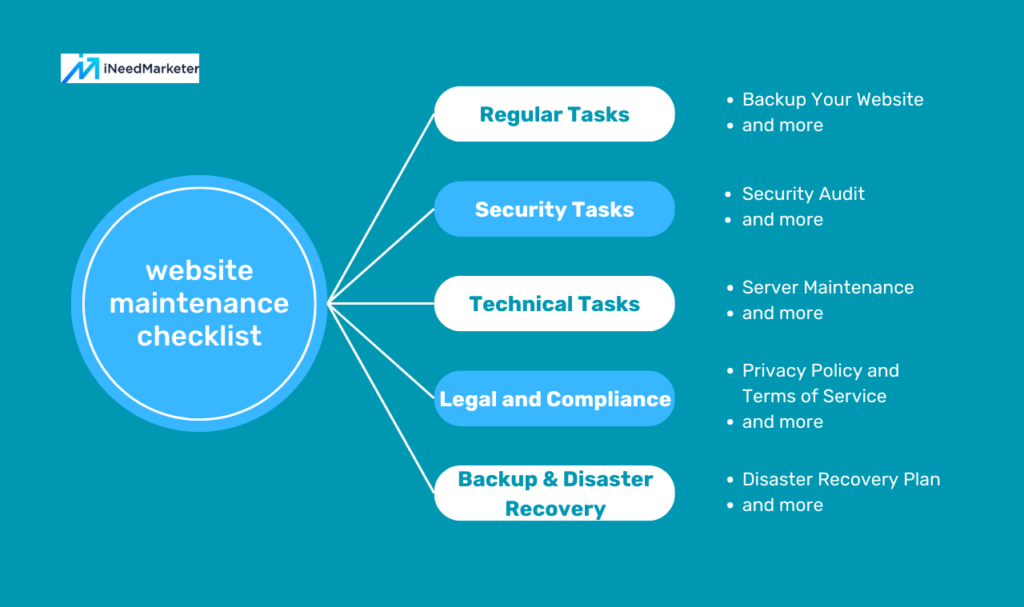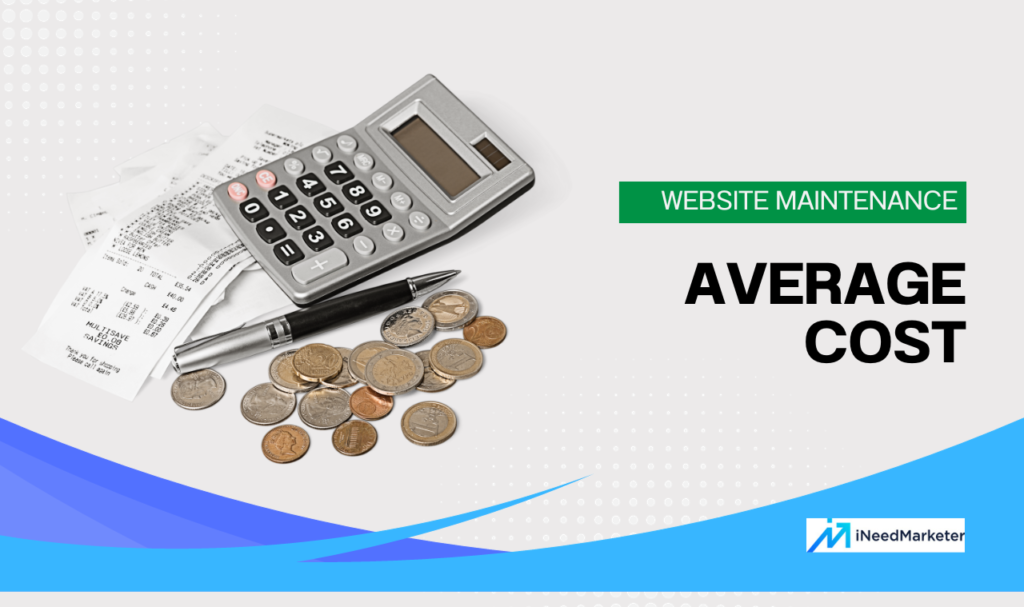A website is a digital platform or location on the internet that consists of web pages containing multimedia content, text, and interactive elements. Websites serve as a means for individuals, businesses, and organizations to share information, products, and services, and engage with a global audience. So we need website maintenance.
In this blog post, we’ll explore what website maintenance is, why it’s essential, and some key aspects to consider.
What is website maintenance?
Website maintenance refers to the process of regularly updating, monitoring, and optimizing your website. So that it works effectively and fulfills its intended purpose. Think of your website as ongoing care and attention to staying relevant, secure, and user-friendly.
Why is the importance of website maintenance?
- Security: Regular updates and patches protect against cyber threats.
- Functionality: It keeps your site running smoothly and user-friendly.
- Content Freshness: Updating content maintains relevance and SEO rankings.
- User Experience: A well-maintained site offers a better experience, reducing bounce rates.
- Reputation: A polished site reflects positively on your brand and credibility.
- Performance: Optimization keeps load times fast, improving user satisfaction.
- Compatibility: Updates ensure compatibility with new devices and browsers.
- Backup: Regular backups safeguard your data in case of unexpected issues.
In sum, website maintenance is essential for security, functionality, user experience, and overall online success. Also several other reasons, website maintenance becomes necessary.
Types of website maintenance service
Depending on the nature of your website and your specific needs, here are some types of website maintenance services:
- Content Updates: Regularly updating content such as text, images, videos, and blog posts to keep it fresh and relevant.
- Security Updates: Installing security patches, updates, and monitoring for vulnerabilities to protect against cyber threats and hacking attempts.
- Software Updates: Keeping the website’s content management system (CMS), plugins, themes, and other software components up-to-date to ensure compatibility and security.
- Backup and Recovery: Regularly backing up website data and having a recovery plan in place to restore the site in case of data loss or a website crash.
- Performance Optimization: Monitoring and improving website performance, including page load times, to provide a better user experience.
- SEO Maintenance: Continuously optimizing the website for search engines, including keyword research, on-page SEO, and link building.
- Mobile Responsiveness: Ensuring that the website is mobile-friendly and functions properly on various devices and screen sizes.
- Content Management: Managing and organizing content, adding new pages, and improving navigation for better user experience.
- E-commerce Maintenance: For e-commerce websites, managing product listings, prices, and inventory, as well as ensuring secure payment processing.
- Database Maintenance: Regularly maintaining and optimizing the website’s database to ensure efficient data storage and retrieval.
- User Experience (UX) Improvements: Making changes to enhance the overall user experience, such as improving site navigation and usability.
And more…
- Compliance Updates: Ensuring the website complies with legal requirements and industry standards, such as GDPR or ADA compliance.
- Monitoring and Reporting: Continuously monitoring website performance, security, and traffic and providing regular reports on these metrics.
- Content Strategy: Developing and executing a content strategy to align with business goals and audience needs.
- Social Media Integration: Managing social media links, sharing buttons, and content integration to maintain an active online presence.
- Email Marketing Integration: Integrating and maintaining email marketing tools and campaigns.
- Domain and Hosting Management: Handling domain registration and renewals, as well as managing web hosting services.
- User Support: Providing customer support and responding to user inquiries, comments, and feedback.
- Bug Fixes and Troubleshooting: Identifying and resolving technical issues, errors, and bugs that may arise.
- Analytics and Reporting: Setting up and analyzing website analytics data to track user behavior and make data-driven decisions.
- Site Migrations: Assisting with website migrations to new servers, domains, or platforms while minimizing downtime.
- Content Backlog: Managing and updating a backlog of content improvements and optimizations.
Are you looking for monthly website maintenance services for your website? Don’t worry, we will provide you the best website maintenance services. If you want to know more about our website maintenance service package click here
A proper way for a website maintenance checklist

Website maintenance is crucial for ensuring that your website remains secure, functional, and up-to-date. Here’s a comprehensive website maintenance checklist to help you keep your website in top shape:
Regular Tasks
- Backup Your Website
- Schedule regular backups of your website, including files and databases.
- Store backups in a secure location, both on-site and off-site.
- Update Content
- Check and update the content to ensure it’s accurate and relevant.
- Remove outdated information or expired promotions.
- Check for Broken Links
- Use a link checker tool to identify and fix broken links.
- Security Updates
- Keep the website’s CMS, plugins, and themes up-to-date.
- Regularly apply security patches and updates.
- Test Website Speed
- Use tools like Google PageSpeed Insights or GTmetrix to analyze and optimize website performance.
- Compress images and minify CSS/JavaScript to improve loading times.
- Check Contact Forms
- Test all contact forms to ensure they are functioning correctly.
- Verify that notifications are being received.
- Review SEO
- Monitor keyword rankings and make necessary optimizations.
- Ensure that metadata (titles, descriptions) is optimized for SEO.
- Review Analytics
- Analyze website traffic using tools like Google Analytics.
- Identify trends and areas for improvement.
- Content Optimization
- Ensure that images are properly optimized for web use.
- Check for duplicate content and address it if necessary.
Security Tasks
- Security Audit
- Regularly conduct security audits to identify vulnerabilities.
- Check for unauthorized access or suspicious activity.
- SSL Certificate
- Ensure that the SSL certificate is valid and properly configured for secure browsing.
- Firewall and Security Plugins
- Maintain an active firewall and security plugins.
- Configure them to block malicious activity.
- User Permissions
- Regularly review and update user permissions to limit access to only necessary personnel.
- Monitor for Malware
- Use security tools to scan for malware and remove any threats.
Technical Tasks
- Server Maintenance
- Regularly check server health and resource usage.
- Optimize server settings for performance.
- Database Optimization
- Optimize database tables to improve website speed.
- Remove unnecessary data.
- Mobile Responsiveness
- Test and ensure that your website is mobile-friendly.
- Cross-browser Compatibility
- Check your website’s compatibility with various web browsers.
- 404 Error Page
- Customize your 404 error page to help users navigate when they encounter broken links.
- Check Third-party Integrations
- Ensure that third-party integrations (e.g., payment gateways, APIs) are functioning correctly.
- Monitor Uptime
- Use a website monitoring tool to track uptime and receive notifications of downtime.
Legal and Compliance
- Privacy Policy and Terms of Service
- Ensure that your website complies with privacy laws and regulations.
- Keep privacy policies and terms of service up-to-date.
- Accessibility Compliance
Ensure your website is accessible to users with disabilities (WCAG compliance).
Backup and Disaster Recovery
- Disaster Recovery Plan
- Create a disaster recovery plan outlining how to restore your website in case of data loss or a security breach.
- Regularly Test Backups
- Periodically restore backups to confirm they are working correctly.
Remember that website maintenance is an ongoing process. Regularly reviewing and updating your website ensures it remains secure, performs well, and provides a positive user experience. The frequency of these tasks may vary depending on the complexity and scale of your website.
An average cost of website maintenance service

The average cost of website maintenance services can vary widely depending on several factors, including the complexity of the website, the frequency of updates required, and the specific services included in the maintenance package. Here are some general guidelines to give you an idea of what to expect:
Basic Maintenance: Basic website maintenance services typically include tasks like updating plugins, themes, and content management systems (CMS). Monitoring website security, and performing regular backups. The cost for basic maintenance can range from $30 to $100 per month for small to medium-sized websites.
Intermediate Maintenance: For websites that require more frequent updates, additional services like content updates, image optimization, and SEO improvements may be included. The cost for intermediate maintenance can range from $100 to $500 per month, depending on the complexity of the website.
Advanced Maintenance: Large, complex websites with extensive functionality, e-commerce capabilities, and a high volume of traffic may require more comprehensive maintenance services. This can include custom development, performance optimization, and ongoing security monitoring. Advanced maintenance costs can vary significantly but may start at $500 per month and go up into the thousands of dollars for enterprise-level websites.
Hourly Rates: Some website maintenance providers charge on an hourly basis, especially for ad-hoc or one-time maintenance tasks. Hourly rates can range from $50 to $150 or more per hour, depending on the expertise of the developer or agency.
Project-Based: In some cases, website maintenance may be offered as part of a larger project or contract. For example, if you’re redesigning your website or launching a new one, ongoing maintenance may be included in the overall project cost.
Pay-As-You-Go: Some website maintenance providers offer pay-as-you-go services, allowing you to pay only for the specific tasks or updates you need. This can be cost-effective for smaller websites with sporadic maintenance needs.
Does website maintenance protect customers’ security?
Yes, website maintenance plays a crucial role in protecting customers’ security. By ensuring that software, plugins, and security patches are regularly updated to defend against vulnerabilities and potential threats.
What to consider when choosing a website maintenance service?
Choosing the right website maintenance service is crucial to ensure that your website remains functional, secure, and up-to-date. Here are several factors to consider when making your selection:
- Service Offerings
- Experience and Expertise
- Response Time and Support
- Cost and Pricing Model
- Service Level Agreements (SLAs)
- Security and Compliance
- Scalability
- Communication and Reporting
- References and Portfolio
- Service Contracts and Terms
- Backup and Disaster Recovery Plans
- Scalability
- Location and Time Zone
- Flexibility and Customization
- Exit Strategy
- Reputation and Reviews
- Legal and Compliance Considerations
How to find the best website maintenance services provider?

- Research and Compare Providers
- Check Portfolio and Experience
- Read Client Testimonials and Reviews
- Assess Pricing and Packages
- Evaluate Technical Expertise
- Inquire About Security Measures
- Verify Responsiveness and Communication
- Confirm Maintenance Services Offered
- Ensure Scalability and Future Support
- Review Service Level Agreements (SLAs)
Conclusion
Website maintenance is not a one-time task but an ongoing commitment to the health and success of your online presence. By regularly updating content, enhancing security, optimizing performance, and focusing on user experience, you can ensure that your website remains a valuable asset. In today’s competitive digital landscape, website maintenance is a key factor in achieving your online goals and maintaining a strong online presence.

